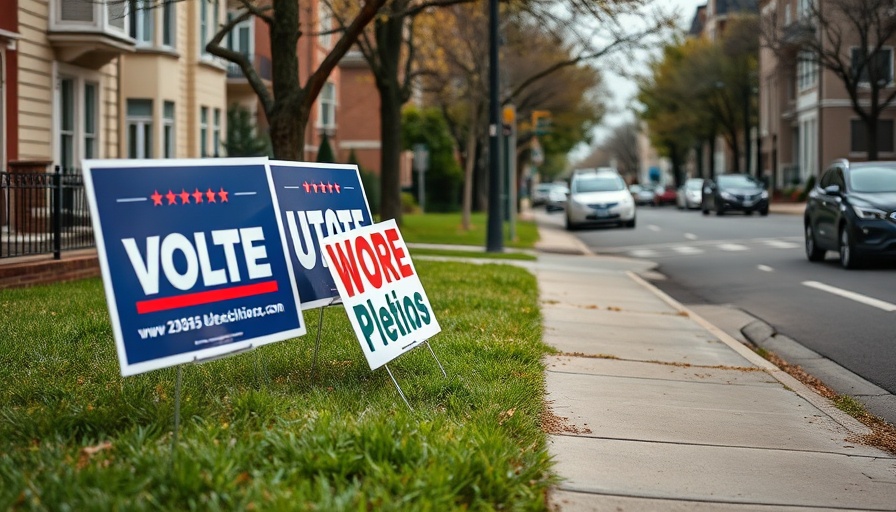
A Call for Community Input: Project Marvel Workshops
The City of San Antonio is opening the floor for public feedback on Project Marvel, the upcoming sports and entertainment district poised for downtown. This initiative seeks to integrate community voices into decisions that directly impact the city, especially surrounding the proposed $1.5 billion Spurs arena. With a series of workshops scheduled throughout the month of July, residents are encouraged to attend and share their thoughts, ensuring that the new development aligns with the needs and aspirations of the community.
Why Your Voice Matters: Community Engagement Opportunities
Participating in the workshops is more than just an opportunity to express opinions; it's a chance to shape the future of San Antonio. City officials, in partnership with architectural firm Able City, aim to create a framework that prioritizes community welfare alongside economic development. The workshops will cover a variety of topics, including housing, transportation, and public spaces — issues that sit at the heart of urban living. And, crucially, it will provide a platform for Spurs representatives to hear directly from the community.
Project Marvel: More Than Just an Arena
This new sports district isn't solely about basketball; it signifies a pivotal development in San Antonio's economic landscape. Designed with public amenities and local business support in mind, Project Marvel seeks to revitalize downtown San Antonio, creating opportunities beyond just game days. As San Antonio grows, so does the need for infrastructure that serves all residents. This means gathering input on how these developments can promote both entertainment and inclusivity.
Workshops Schedule: Dates and Locations Across San Antonio
The details of the workshops are crucial for those wishing to participate. The meetings are set to run on various dates throughout July, with different sessions targeting specific city districts. From basic open forums to focused discussions on local business impact and community spaces, each workshop is designed to cater to diverse interests. Below is an overview of the workshop schedule:
- District 1: July 8-9 - Oblate School of Theology, 285 Oblate Dr.
- District 2: June 24-25 - Wheatley Heights Sports Complex, 200 Noblewood Dr.
- District 3: June 30-July 1 - Southside Lions Senior Center, 3303 Pecan Valley Dr.
- District 4: June 24-25 - Legacy Room in Ozuna Library at Palo Alto College, 1400 W. Villaret Blvd.
- District 5: June 24-25 - Progreso Hall, 1313 Guadalupe St. #200
- District 6: July 8-9 - Darner Parks and Recreation Headquarters, 5800 Old Hwy. 90 W.
- District 7: June 24-25 - St. Paul Community Center, 1201 Donaldson Ave.
- District 8: July 8-9 - Phil Hardberger Urban Ecology Center, 8400 N.W. Military Hwy.
- District 9: July 8-9 - Walker Ranch Senior Center, 835 W. Rhapsody Dr.
- District 10: June 30-July 1 - Morgan’s Multi-Assistance Center, 5210 Thousand Oaks Dr.
Reflecting on the Bigger Picture: Inclusivity in Development
As San Antonio plans this ambitious project, it’s crucial for the city to ensure that development serves everyone. Housing and transportation discussions during these workshops highlight the importance of inclusivity in urban planning—community voices are essential in emphasizing the need for equitable access to opportunities and public spaces. Moreover, by addressing potential issues before they arise, San Antonio can lay the groundwork for a district that reflects the needs of its diverse population.
Next Steps: Engaging with Your Community
As the workshops approach, residents are encouraged to actively engage with the process. Local leaders and city officials are eager to hear your opinions, ensuring that Project Marvel develops into a unique and beneficial space for all residents. Don’t miss this chance to weigh in on proposals that could shape San Antonio's downtown for generations to come.
Be sure to mark your calendars for the upcoming workshops. Every opinion matters, and together we can create a vibrant future for San Antonio.
 Add Row
Add Row  Add
Add 




Write A Comment